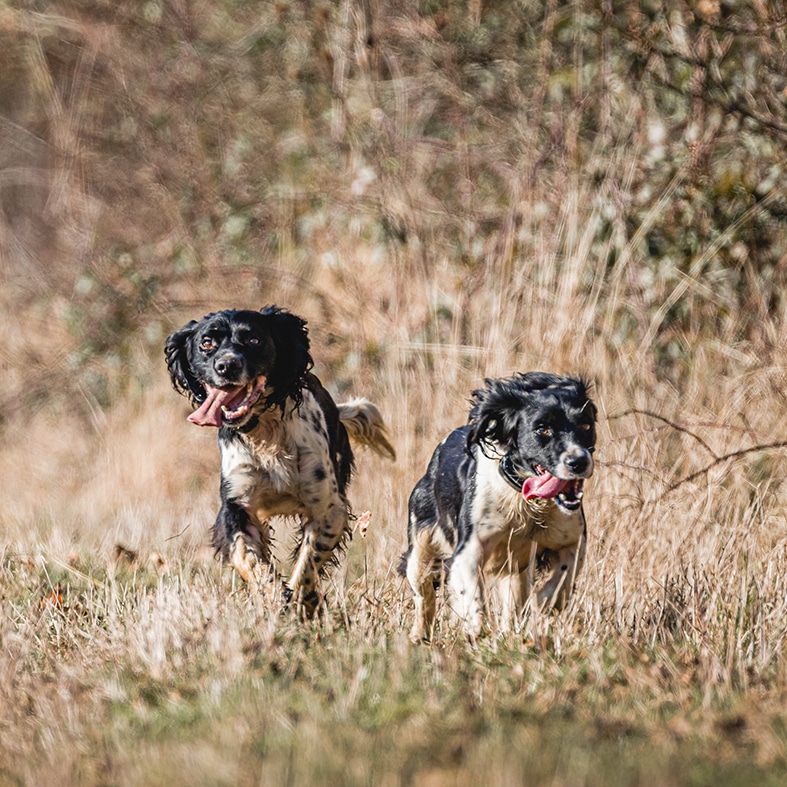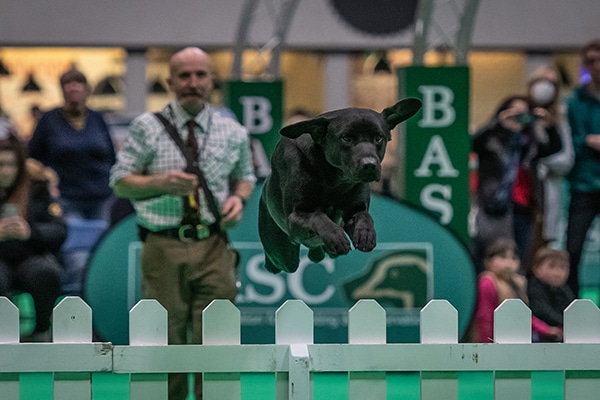
Where to start
The key to training a gundog is to make sure that training sessions are enjoyable for both you and your dog.
Get information on the legal shooting season for mammals and birds in the UK.
Apply for funding for your project or make a donation today
Comprehensive information and advice from our specialist firearms team.
Everything you need to know about shotgun, rifle and airgun ammunition.
Find our up-to-date information, advice and links to government resources.
Everything you need to know on firearms law and licensing.
All the latest news and advice on general licences and how they affect you.


Home » Gundogs » Gundog advice » First aid in the field
Vet Rebecca Bailey shares her essentials for a good first aid kit and some quick tips on need-to-know first aid care.
It’s rare for a working gundog to get through its life without a few cuts and minor injuries. Occasionally something more serious happens, but you can be prepared for most eventualities with a good first aid kit on hand.
On every shoot day or excursion, there should be at least one good first aid kit available.
Having the right kit will enable you to manage a variety of common issues and ailments effectively, and give you time to seek further veterinary help if required.
If faced with a large volume of blood that suggests a severed vessel, you need to quickly apply pressure to stem the bleeding.
Roll up your tea towel to make a thick pad and tape it firmly over the affected area.
Call the vet. This much blood will warrant fast veterinary action so secure the pad and pressure as best you can and seek assistance.
For less severe wounds and tears you can take a more measured approach.
It may be hidden under mud or fur. Use your bottle of water to flush the wound and wash your hands. Or use hand sanitiser or put gloves on before taking a closer look.
Use the mild antiseptic solution to clean the wound. For minor skin abrasions, once clean, a layer of Vaseline will help protect and slow bleeding.
If the wound is in a place where a bandage can be applied, then cover it. Use a non-adherent gauze or lint for a good first layer then aim to have a layer to pad and a layer to hold it all in place.
Not the most obvious items but highly recommended for your kit are a source of food and a muzzle.
Working dogs are expending a huge amount of energy and can go a bit wobbly or collapse if they over-exert.
Carry some dog treats with you just to help keep energy levels up throughout the day.
However, DON’T give a dog anything if the dog is injured and you suspect surgery is likely to be needed, as this may delay the anaesthetic.
Even the most placid of dogs may bite when frightened or in severe pain.
Never be afraid to use a muzzle either a manufactured one or a piece of bandage tied around the nose. It is more important that you can act quickly and safely to see to your dog if first aid is required.
If you’re in any doubt about your dog’s well-being or feel out of your depth in caring for a wounded or distressed dog, call your vet.
In partnership with

The key to training a gundog is to make sure that training sessions are enjoyable for both you and your dog.

Kennel Cough is caused by a combination of highly infectious viruses and bacteria but how can you spot it?

Taking part in Crufts, particularly for the first time, is a very exciting experience and there is no need to feel intimidated by the day.